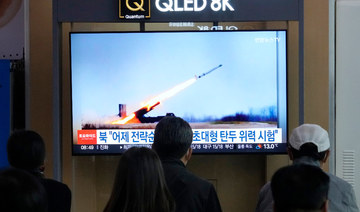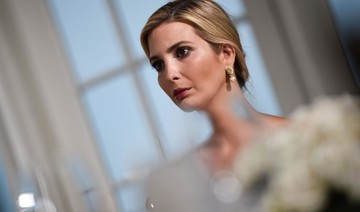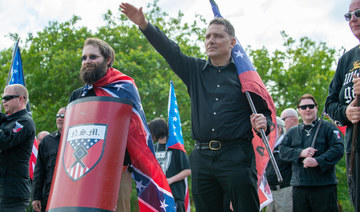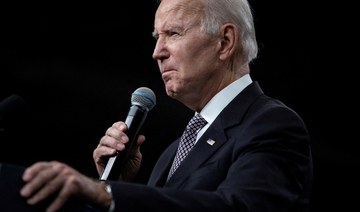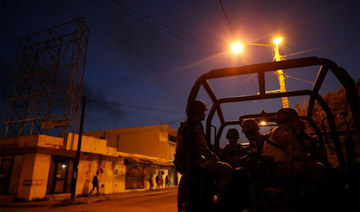SEOUL: North Korea fired a number of short-range ballistic missiles toward the sea off its east coast on Friday, South Korea’s military said, a day after the US and South Korea conducted joint drills with stealth fighter jets simulating air combat.
South Korea’s Joint Chiefs of Staff condemned the launch as a provocation. It said the projectiles were fired from the east coast town of Wonsan and flew about 300 km (186 miles) before landing in the sea.
Citing a government official, Japan’s public broadcaster NHK also reported that a short-range missile appeared to have been launched and had already fallen.
North Korea has launched ballistic and cruise missiles as well as tactical rockets in recent months, describing them as part of a program to upgrade its defensive capabilities.
South Korea’s military did not specify the latest type of weapon, but the North’s state media has reported that its military has been testing multiple launch rocket systems that are being upgraded.
North Korean leader Kim Jong Un viewed the testing of 600 mm “super-large” multiple rocket launchers and 240 mm multiple launch rockets in recent weeks and also visited production facilities, state media reported.
Tensions on the Korean peninsula have increased since the North last year scrapped a 2018 pact aimed at de-escalating tensions near the military border drawn up under a truce ending the 1950-53 Korean War and then labelled the South “enemy No. 1.”
Earlier on Friday, the powerful sister of North Korea’s leader, Kim Yo Jong, said its tactical weapons were intended solely as a deterrent against South Korean military aggression, while again denying that Pyongyang was exporting the weapons.
US and South Korean officials have accused the North of shipping weapons to Russia to help Moscow replenish stocks for use in its war against Ukraine. Moscow and Pyongyang have denied the accusation.
Friday’s missile launches come at the same time as a visit by Russian President Vladimir Putin to the Chinese northeastern city of Harbin.
Putin and Chinese President Xi Jinping criticized Washington and its allies on Thursday for what the leaders called “intimidation in the military sphere” against North Korea at a meeting in Beijing.
South Korea’s air force has said US and South Korean stealth fighters conducted “intense” joint exercises on Thursday in the central region to test and enhance offensive and defensive maneuverability.
North Korea fires multiple short-range ballistic missiles, Seoul says
https://arab.news/928nf
North Korea fires multiple short-range ballistic missiles, Seoul says

- South Korea’s Joint Chiefs of Staff did not immediately provide details of the projectile or its trajectory
- North Korea has launched a range of ballistic and cruise missiles as well as tactical rockets in recent months
US designates Nordic far-right group as terorrists

- “The United States remains deeply concerned about the racially or ethnically motivated violent extremist threat worldwide and is committed to countering the transnational components of violent white supremacy,” a State Department statement said
WASHINGTON: The United States on Friday designated the Nordic Resistance Movement and three of its leaders terrorists, saying the Scandinavian neo-Nazis pose a threat to Americans.
The State Department added the movement and the leaders to its Specially Designated Global Terrorist list, meaning that any US-based assets will be frozen and that they will be blocked from using the US financial system.
The State Department said it made its finding based on the group’s history of violence rooted in “its openly racist, anti-immigrant, antisemitic, anti-LGBTQI+ platform.”
“The United States remains deeply concerned about the racially or ethnically motivated violent extremist threat worldwide and is committed to countering the transnational components of violent white supremacy,” a State Department statement said.
The group has carried out or attempted to carry out “acts of terrorism that threaten the security of United States nationals or the national security, foreign policy or economy of the United States,” it said.
The leaders blacklisted by the State Department, all Swedes, were group’s chief Fredrik Vejdeland, and two other senior figures, Par Oberg and Leif Robert Eklund.
The group, known by its Swedish acronym NMR, professes Nazism and seeks a united “ethnic Nordic” nation.
Founded in 1997 in Sweden as the Swedish Resistance Movement, it saw sister organizations spring up in other Nordic countries until they were united under NMR in 2016.
The group stages protests and produces media arguing against immigration, but has also been linked to violence.
In 2016, a 28-year old man died after being assaulted by NMR members in Helsinki and, according to watchdog organization Expo, several members have been convicted of a series of bombings in Gothenburg in 2016 and 2017.
Finland’s Supreme Court banned the group in 2020.
After takin office in 2021, President Joe Biden’s administration laid out a strategy to counter domestic terrorism that included identifying foreign groups that provide support.
The State Department first designated a white supremacist group as terrorists in 2020 — the Russian Imperial Movement — after years of largely targeting Islamist and far-left movements overseas.
US attack sub, Canada navy patrol ship arrive in Cuba on heels of Russian warships

- The confluence of Russian, Canadian and US vessels in Cuba was a reminder of old Cold War tensions
- Tensions with the US over communism in its “backyard” peaked with the Cuban Missile Crisis of 1962
HAVANA: A Canadian navy patrol ship sailed into Havana early on Friday, just hours after the United States announced a fast-attack submarine had docked at its Guantanamo naval base in Cuba, both vessels on the heels of Russian warships that arrived on the island earlier this week.
The confluence of Russian, Canadian and US vessels in Cuba — a Communist-run island nation just 145 km (90 miles) south of Florida — was a reminder of old Cold War tensions and fraught ties between Russia and Western nations over the Ukraine war.
However, both the US and Cuba have said the Russian warships pose no threat to the region. Russia has also characterized the arrival of its warships in allied Cuba as routine.
The Admiral Gorshkov frigate and the nuclear-powered submarine Kazan, half submerged with its crew on deck, sailed into Havana harbor on Wednesday after conducting “high-precision missile weapons” training in the Atlantic Ocean, Russia’s defense ministry said.
Canada`s Margaret Brooke patrol vessel began maneuvers early on Friday to enter Havana harbor, part of what the Canadian Joint Operations Command called “a port visit ... in recognition of the long-standing bilateral relationship between Canada and Cuba.”
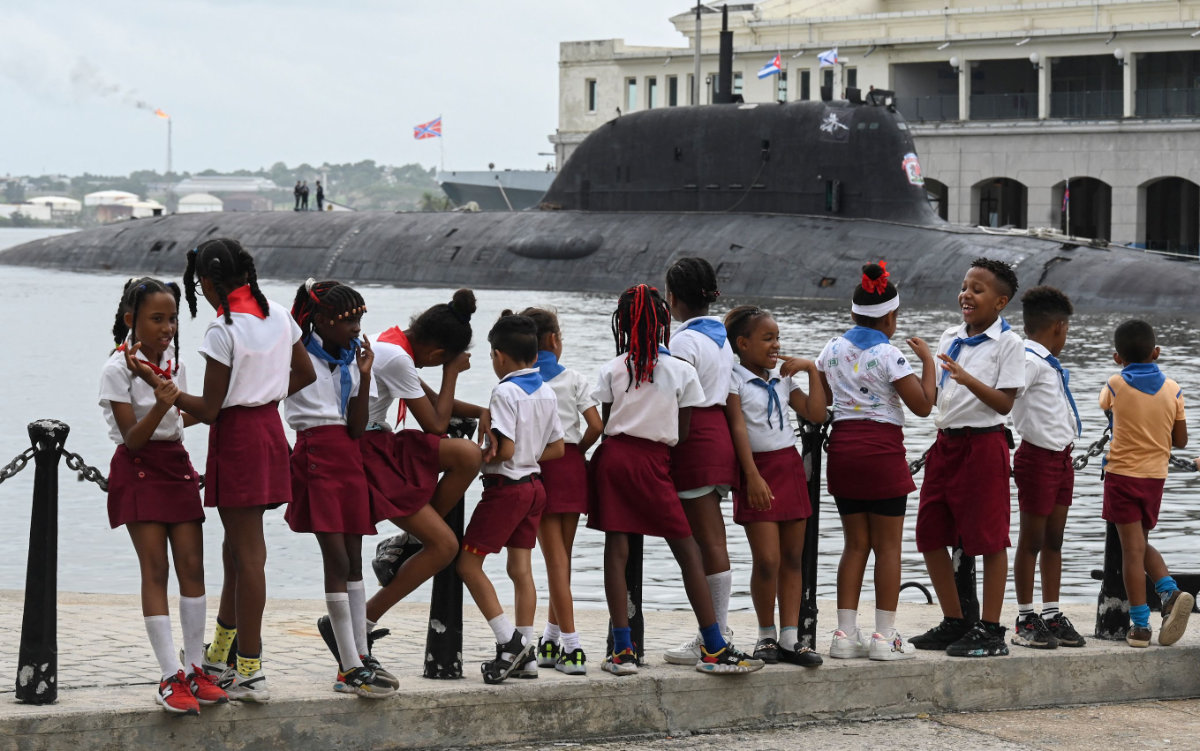
Hours earlier, the US Southern Command said the fast-attack submarine Helena had arrived on a routine port visit to Guantanamo Bay, a US naval base on the tip of the island around 850 km (530 miles) southeast of Havana.
“The vessel’s location and transit were previously planned,” Southern Command said on X.
Cuba`s foreign ministry said it had been informed of the arrival of the US submarine but was not happy about it.
“Naval visits to a country are usually the result of an invitation, and this was not the case,” said Vice Foreign Minister Carlos Fernández de Cossío.
“Obviously we do not like the presence in our territory (of a submarine) belonging to a power that maintains an official and practical policy that is hostile against Cuba.”
A Canadian diplomat characterized the Margaret Brooke`s arrival as “routine and part of long-standing cooperation between our two countries,” adding it was “unrelated to the presence of the Russian ships.”
Russia and Cuba were close allies under the former Soviet Union, and tensions with Washington over communism in its “backyard” peaked with the Cuban Missile Crisis of 1962. Moscow has maintained ties with Havana.
When asked what message Moscow was sending, Russian Foreign Ministry spokeswoman Maria Zakharova said on Thursday the West never appeared to take notice when Russia sent signals through diplomatic channels.
“As soon as it comes to exercises or sea voyages, we immediately hear questions and a desire to know what these messages are about,” Zakharova said. “Why do only signals related only to our army and navy reach the West?“
The Russian warships are expected to remain in Havana harbor until Monday.
South Africa’s Ramaphosa re-elected as president after coalition deal

- Lawmakers voted overwhelmingly to put Ramaphosa, back in office for another five years after the May 29 general election
- The ANC-led broad coalition brings together a majority of the 18 parties in the 400-seat National Assembly
CAPE TOWN: South Africa’s President Cyril Ramaphosa was re-elected for a second term on Friday, after his humbled ANC cobbled together an unprecedented coalition government.
Lawmakers in Cape Town voted overwhelmingly to put Ramaphosa, 71, back in office for another five years after the May 29 general election that produced no outright winner.
“I am humbled and honored that you, as members of the National Assembly, have... decided to elect me to be the President of the Republic of South Africa,” Ramaphosa said in his acceptance speech.
Last month’s election marked a historic turning point for South Africa, ending three decades of dominance by the African National Congress of the late Nelson Mandela.
The party that led the anti-apartheid struggle won only 40 percent of the vote and, for the first time, lost its absolute majority in parliament.
It has now struck a deal to form what it calls a government of national unity.
“This is a historic juncture in the life of our country, which requires that we must work and act together,” Ramaphosa said.
ANC Secretary General Fikile Mbalula said on Friday the broad coalition brings together a majority of the 18 parties that won representation in the 400-seat National Assembly.
These include the center-right Democratic Alliance (DA), the Zulu nationalist Inkatha Freedom Party and other smaller groups.
Ramaphosa was re-elected by fellow MPs with 283 votes in a secret ballot.
He saw off a last-minute challenge by Julius Malema, the firebrand leader of the radical leftist Economic Freedom Fighters (EFF), whose candidacy gained 44 votes.
Ramaphosa will be sworn in next week in Pretoria and then unveil his new cabinet.
Earlier, Chief Justice Raymond Zondo had opened the parliament’s first sitting, swearing in MPs in batches ahead of votes on the election of a speaker and deputy speaker.
The first post went to the ANC’s Thoko Didiza and, in a first sign the power-sharing deal was working, the second went to the DA’s Annelie Lotriet. Both are women and Lotriet is from South Africa’s white minority.
Lawmakers cast their ballot one by one in a lengthy ceremony held in a Cape Town convention center, as the parliament building is being rebuilt after a 2022 fire.
EFF members took the oath wearing red overalls and in some cases rubber boots and plastic construction worker helmets.
They declined to support the incoming administration, having refused to countenance joining an alliance with right-wing or white-led parties.
“This is not a government of national unity, this is a grand coalition between the ANC and white monopoly capital. History will judge you harshly,” Malema said, after conceding defeat.
Graft-tainted former president Jacob Zuma’s new party uMkhonto weSizwe (MK), which came third in the election, has disputed the results and its MPs boycotted Friday’s sitting.
“The sitting of the national assembly today as far as we’re concerned is illegal and unconstitutional,” MK spokesman Nhlamulo Ndhlela told AFP.
A former trade unionist turned millionaire businessman, Ramaphosa will preside over a government combining radically different political views.
The ANC is a historically pan-Africanist, progressive party of the left that has overseen welfare and economic empowerment programs for poor, black South Africans.
The largest coalition party, the DA, pushes a liberal, free-market agenda. Smaller parties that are understood to have agreed to join the government range from the left to the far right.
“At the heart of this government of national unity statement is a shared respect and defense of our constitution and the rule of law,” DA leader John Steenhuisen said.
The agreement extended to regional coalitions in Johannesburg’s Gauteng province and in KwaZulu-Natal.
Zuma’s MK won the most votes in the latter but was left empty-handed as coalition members managed to get a wafer-thin majority of 41 out of 80 provincial councillors.
Steenhuisen added that the coalition agreement included a consensus mechanism to deal “with the disagreements that will inevitably arise.”
“This is not the end of the process. And the road ahead will not be an easy one,” Steenhuisen said, explaining that the two-week deadline imposed by the constitution to form a government did not leave enough time to iron out all details.
Ramaphosa first came to power in 2018 after Zuma was forced out under the cloud of corruption allegations.
Under his watch South Africa suffered from record power cuts, the economy languished and crime remained rife. Unemployment is at almost 33 percent.
He will now have the arduous task to bridge conflicting views within government to turn around South Africa’s economic fortunes.
“Rapid, inclusive and sustainable economic growth” was listed as a top priority in a draft of the coalition deal.
GDP grew by only 0.6 percent in 2023 and was down 0.1 percent in the first three months of 2024.
Ukraine fighting ‘intense’ battles in Donetsk region

- “The Pokrovsk front... is the most intense in terms of enemy attacks,” the Ukrainian military said
- In the war-battered town of Selydove near the front line in Donetsk, officials said six people were wounded by Russian aerial attacks overnight
KYIV: Ukraine said on Friday that Russian forces were concentrating their firepower on the Pokrovsk front in the eastern Donetsk region, where overnight strikes wounded at least six people.
The Kremlin annexed the industrial territory in late 2022, months after invading, and its forces are making incremental gains there.
“The Pokrovsk front... is the most intense in terms of enemy attacks,” the Ukrainian military said in a briefing.
In the war-battered town of Selydove near the front line in Donetsk, officials said six people were wounded by Russian aerial attacks overnight.
AFP journalists on the scene hours after the attack saw the interior of a supermarket reduced to heaps of metal and glass under a partially gutted roof.
The force of the explosion, which tore open a neighboring building, also blew out the windows of residential buildings across the street.
Oleg, a 57-year-old resident, said he heard a strange noise at around 9.00 p.m. on Thursday evening.
He thought it was several helicopters flying overhead, until he saw the explosion.
Lyudmila, still in shock, assessed the damage in her flat where the windows had been blown out by the blast.
“Everything was blown away,” the 68-year-old told AFP, her face bruised by the blast.
Kyiv and Moscow staged dozens of drone and missile attacks overnight and during the day Friday.
The two sides have stepped up cross-border aerial assaults in recent weeks, Kyiv targeting Russian energy facilities and Moscow launching retaliatory barrages.
The governor of Belgorod region, Vyacheslav Gladkov, said seven people were wounded when shelling caused a section of a five-story block of flats to collapse in the border town of Shebekino, which often comes under attack from the Ukrainian side.
Emergency services said rescuers were still searching through the rubble.
Russia said it had downed 87 Ukrainian drones, 70 of which had targeted the southern Rostov region that houses the headquarters of its military operation against Ukraine.
The defense ministry said 70 drones were downed over Rostov, six each over Kursk and Voronezh, two each over Volgograd and the Belgorod region bordering Ukraine, and one over the annexed Crimean peninsula.
Attacks sparked power cuts in several areas of the Rostov region, its governor Vasily Golubev said on social media.
In the Voronezh region, which borders Ukraine, a fuel reservoir was slightly damaged by falling debris, its governor Alexander Gusev said.
Kyiv meanwhile said that Ukrainian air-defense systems had downed 24 out of 31 Russian drones and missiles fired overnight.
During the day, drone attacks killed a 54-year-old man in the southern Kherson region and wounded a 17-year-old girl in the eastern city of Dnipro, regional authorities said.
Three people were wounded in a drone attack in the eastern Sumy region and several homes were damaged in the neighboring Kharkiv region.
UN agencies urge Greece to shed light on migrant shipwreck

- IOM, UNHCR stress importance of a comprehensive investigation on first anniversary of tragedy
ATHENS: The UN’s refugee and migration agencies have criticized Greece’s failure over the past year to shed light on one of the worst migrant shipwrecks in the Mediterranean Sea that left hundreds dead.
UNHCR and IOM stressed the “critical” importance of a “comprehensive and conclusive” investigation in a joint statement on the first anniversary of the June 14, 2023, tragedy in southern Greece.
“Investigations have been initiated in Greece, but so far, no outcome establishing the facts on the incident has been communicated,” they said.
Left-wing groups planned protest marches in Athens, other cities, and outside Greek embassies and consulates in other European countries.
Migrant charities and rights groups have widely criticized the Greek Coast Guard’s handling of the shipwreck in international waters 75 km off the town of Pylos.
Only 104 people survived the sinking of the Adriana, a rusty metal fishing boat smuggling up to 750 migrants from Libya to Italy. Although the vessel was in bad shape, Greek officials could not evacuate the passengers before it sank. Survivors have said the Adriana went down during a botched Coast Guard attempt to tow it, which Greek officials strongly deny.
“A thorough investigation is essential to secure justice for the survivors and the families of the victims and to help prevent similar tragedies in the future,” the two UN agencies said. On Thursday, rights groups Human Rights Watch and Amnesty International said “a credible process for accountability” was needed.
“It is unconscionable that one year since this horrific tragedy, the investigation into the potential liability of (Greece’s) Coast Guard has barely progressed,” HRW official Judith Sunderland said in a joint statement by the groups.
A naval court launched a preliminary investigation days after the accident but has released no information on its progress. In November 2023, Greece’s state ombudsman started a separate probe.
Greek officials had made no statement as of early afternoon Friday to mark the shipwreck anniversary and did not respond to previous requests for comment.
Greece is a main entry point for people from the Middle East, Africa, and Asia seeking a better life in the European Union.




